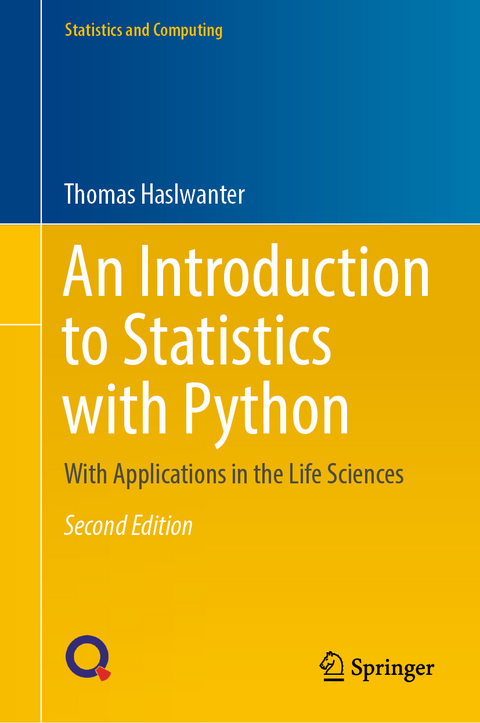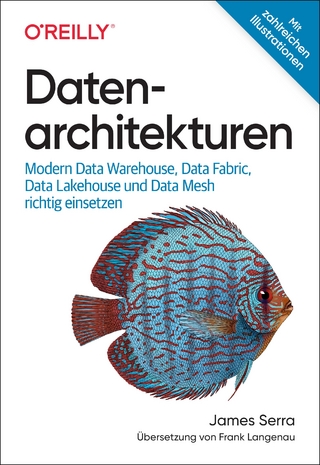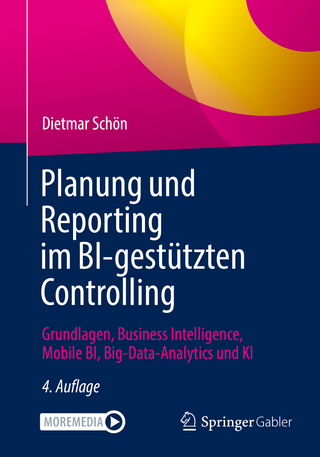
An Introduction to Statistics with Python
Springer International Publishing (Verlag)
978-3-030-97370-4 (ISBN)
Now in its second edition, this textbook provides an introduction to Python and its use for statistical data analysis. It covers common statistical tests for continuous, discrete and categorical data, as well as linear regression analysis and topics from survival analysis and Bayesian statistics.
For this new edition, the introductory chapters on Python, data input and visualization have been reworked and updated. The chapter on experimental design has been expanded, and programs for the determination of confidence intervals commonly used in quality control have been introduced. The book also features a new chapter on finding patterns in data, including time series. A new appendix describes useful programming tools, such as testing tools, code repositories, and GUIs.
The provided working code for Python solutions, together with easy-to-follow examples, will reinforce the reader's immediate understanding of the topic. Accompanying data sets and Python programs are also available online. With recent advances in the Python ecosystem, Python has become a popular language for scientific computing, offering a powerful environment for statistical data analysis.With examples drawn mainly from the life and medical sciences, this book is intended primarily for masters and PhD students. As it provides the required statistics background, the book can also be used by anyone who wants to perform a statistical data analysis.
lt;p>Thomas Haslwanter is a Professor at the School of Medical Engineering and Applied Social Sciences at the University of Applied Sciences Upper Austria in Linz, and lecturer at the ETH Zurich in Switzerland. He also worked as a researcher at the University of Sydney, Australia and the University of Tübingen, Germany. He has extensive experience in medical research, with a focus on the diagnosis and treatment of vertigo and dizziness and on rehabilitation. After 15 years of extensive use of Matlab, he discovered Python, which he now uses for statistical data analysis, sound and image processing, and for biological simulation applications. He has been teaching in an academic environment for more than 15 years.
I Python and Statistics.- 1 Introduction.- 2 Python.- 3 Data Input.- 4 Data Display.- II Distributions and Hypothesis Tests.- 5 Basic Statistical Concepts.- 6 Distributions of One Variable.- 7 Hypothesis Tests.- 8 Tests of Means of Numerical Data.- 9 Tests on Categorical Data.- 10 Analysis of Survival Times.- III Statistical Modelling.- 11 Finding Patterns in Signals.- 12 Linear Regression Models.- 13 Generalized Linear Models.- 14 Bayesian Statistics.- Appendices.- A Useful Programming Tools.- B Solutions.- C Equations for Confidence Intervals.- D Web Ressources.- Glossary.- Bibliography.- Index.
| Erscheinungsdatum | 17.11.2022 |
|---|---|
| Reihe/Serie | Statistics and Computing |
| Zusatzinfo | XVI, 336 p. 156 illus., 131 illus. in color. |
| Verlagsort | Cham |
| Sprache | englisch |
| Maße | 155 x 235 mm |
| Gewicht | 654 g |
| Themenwelt | Mathematik / Informatik ► Informatik ► Datenbanken |
| Mathematik / Informatik ► Mathematik ► Computerprogramme / Computeralgebra | |
| Mathematik / Informatik ► Mathematik ► Statistik | |
| Mathematik / Informatik ► Mathematik ► Wahrscheinlichkeit / Kombinatorik | |
| Schlagworte | alternative to R • applications in the life sciences • Bayesian Statistics • Data Analysis • Data Visualization • Generalized Linear Models • Hypothesis tests • Introductory Statistics • patterns in data • Programming Tools • Python • Python source code • Regression • Statistical Methods • Statistical Modelling • statistical tests • survival times • Time Series |
| ISBN-10 | 3-030-97370-0 / 3030973700 |
| ISBN-13 | 978-3-030-97370-4 / 9783030973704 |
| Zustand | Neuware |
| Informationen gemäß Produktsicherheitsverordnung (GPSR) | |
| Haben Sie eine Frage zum Produkt? |
aus dem Bereich


